We’d been at sea aboard the RV Laurence M Gould (or LMG for short) for 7 days since leaving port at Punta Arenas in the south of Chile, when word came around that we’d reached Palmer Station. The excitement was noticeable. Our crossing of the Drake Passage has been easy enough, with moderate seas (13-15ft) and the cruise/science trolls along the islands to the northwest of the Palmer Peninsula had been spectacular.
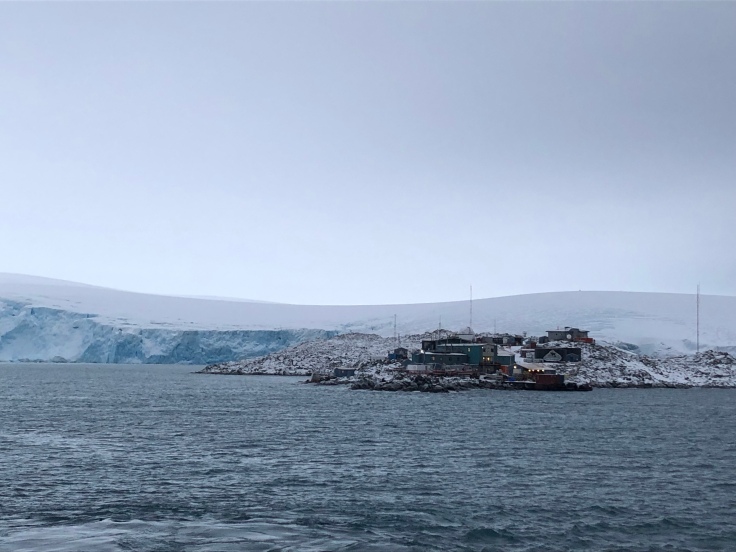
For a few of us, this was homecoming… returning to a place dear in their hearts. For some others… just a stop to offload some passengers and a lot of cargo taking up room on the ship, before heading out to conduct 4 weeks of maritime science along the peninsula.

For the four fuelies… it was the start of something messy, smelly, and a dream come true. You see, with Lisa being the exception… none of us had been to Palmer. It wasn’t something that came up often. Deep field? Sure. Marble Point? Of course. South Pole? Yeah. Pretty likely. But not Palmer. So this signified a pretty special opportunity for Ed, Corey, and I, and checked the box off on the triple crown; a stay at all three year-round stations in the United States Antarctic Program.

Why were we there? Well… it’s no secret that the Antarctic program runs on fuel. It keeps the lights on, the buildings warm, the support equipment moving, and the science progressing. Palmer Station has two large bulk tanks that provide for its year-round operations, one of which had been filled with Marine Grade Oil (MGO). The unfortunate part of this fuel is that it likes to “coagulate” at lower temperatures, unlike the AN8 blend used in McMurdo, South Pole, and the deep field. There’s many reasons for this difference in fuel choice, none of which are the point of this story. But several years ago, the other tank began stocking an Antarctic blend, more suited for the temperatures down south. With that transition, it was our goal to get as much of the MGO mixed up and into solution again as possible and then clean and set the tank for redundant status as a safety net for the tank holding Antarctic blend.
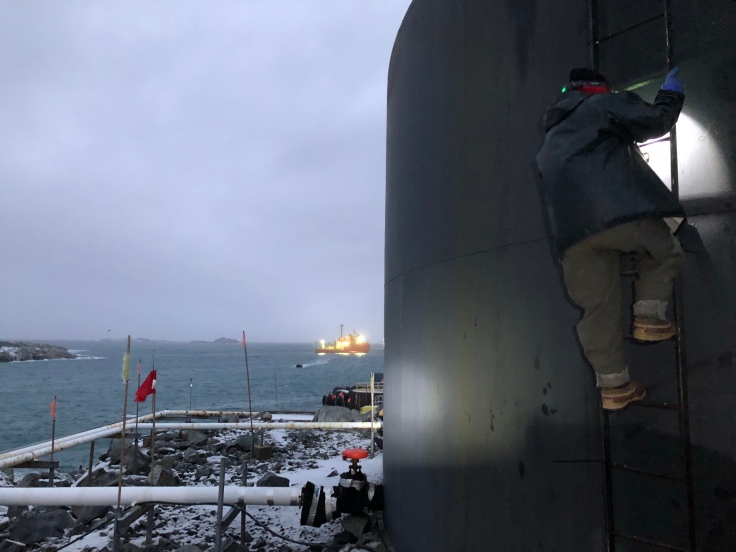
We docked around 11am, and began the task of off-loading all the cargo we had brought with. Food and freshies for the galley, tools and supplies for our project, science support materials… all of it. And because our crane didn’t work… we did it by hand. This process lasted for a few hours, but many hands make “light” work.

The gangway was finally dropped, and we stepped eagerly onto the south shore of Anvers Island, the newest human residents in the land of seals and penguins. We collected our gear, made it to our bunk rooms, and grabbed dinner. The galley and dining room at Palmer became one of my favorite places to hang out. Windows overlooking the pier and water, couches, and a stove to set the ambiance. Such a far cry from the hustle and chaos of the McMurdo galley.

Orientations, safety training, and all the household things completed… we got to work. We only had 4 weeks to not only empty and clean the tank, but also to help do maintenance on the rest of the fuel system at station. We had our work cut out for us.

The first big step was to replace filters in the pump house that had become clogged. Not a big deal, right? Well… when each element is 5ft long and the total capacity of the vessel is over 100gal… it gets fun. The wax from the MGO created a film inside the vessel that also needed cleaning out, so a mix of yoga and squeegee acrobatics came out to accomplish this tasking.

New filters in, system checked out and primed, it was time to move some fuel out of that tank. We had to make sure we were well below the side manway opening prior to cracking those bolts loose. Always a nervous moment, even with visual confirmation of fluid levels. As the breaker bar came out, the rest of us stood by over our containment… ready for the worst.

But our planning and visual confirmation checked out. We removed the manway to find the product level several inches clear of the opening, and got our first good look at what was going to be our life fit the next few weeks.

If you’ve ever played with marshmallow fluff, that’s probably the closest comparison I can give to what the waxy fuel was like. Not hard (thankfully) but not overly fluid. We noticed a decent amount of liquid fuel still, so pumped what we could through the hard piping and filters and off to the day use tanks supplying the generators and boilers. This didn’t last overly long before we lost suction at the tank, but hey, it was less we would have to play with.

At this point, we were faced with using a portable pump to transfer the remaining liquid out of the manway and into storage containers. We set up our pump, our hoses, containers, spill response, and procedure and set to work. After limited success from outside the tank, we made the decision to enter. After all, why go through confined space and respirator training if you’re not going to use it?? Corey (my friend and roommate from our first deployment to the Ice) volunteered to go first. After checking air quality levels and donning rubber boots, a tyvek suit, respirator, and rescue harness Corey headed in and gave us the biggest surprise we’d come across.
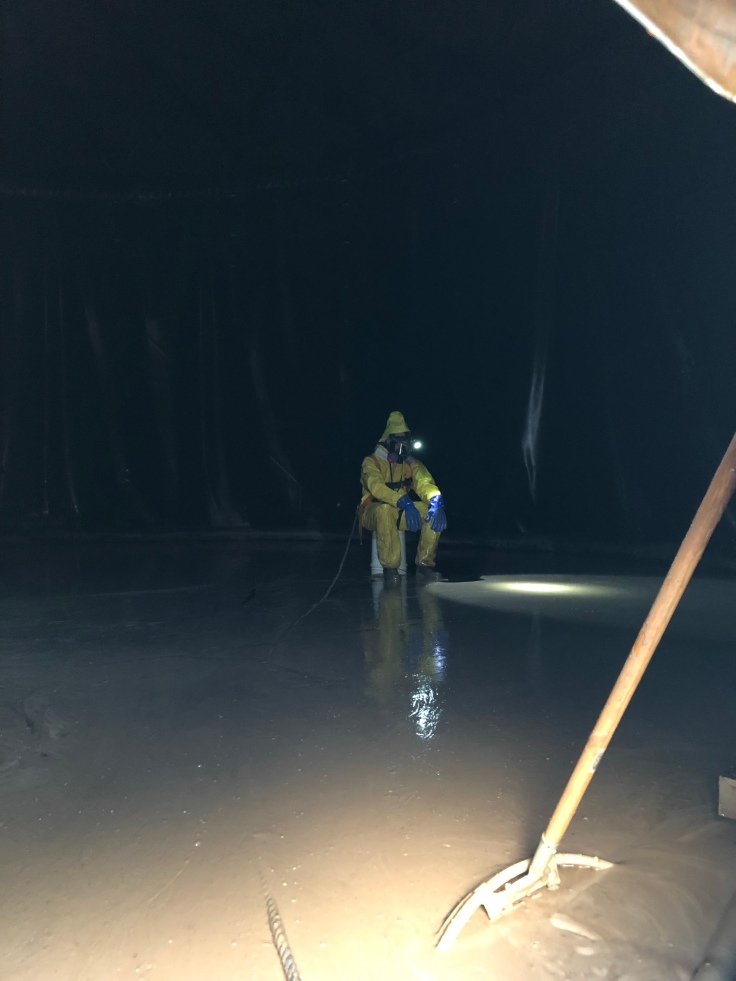
Our plan had been to push any remaining fluid through the “marshmallow fluff” towards a slimmer fitted to our hose intake. What we quickly realized was that while Corey was pushing the fluff around, it was turning into something more fluid. Like chocolate milk that you could burn. But that chocolate milk was being sucked out by the pump and allowed us to easily remove the mix. A sigh of relief.

And so our next several days consisted of one or two folks inside the tank, an attendant at the manway to monitor those souls inside, and someone working the hose filling portable storage tanks. Easy as pie. In an effort to minimize waste being sent off continent, we attempted to warm and filter as much of this as we could, introducing it into the day tanks as a blend with the Antarctic blend from the other bulk tank.

In fairly short order we had finished removing the waxy fuel and had begun to remove the old poly liner that served as a containment within the containment. This was a labor-intensive operation, carefully cutting the liner and felt protective layer into pieces that could be easily packaged and removed from the bulk tank.
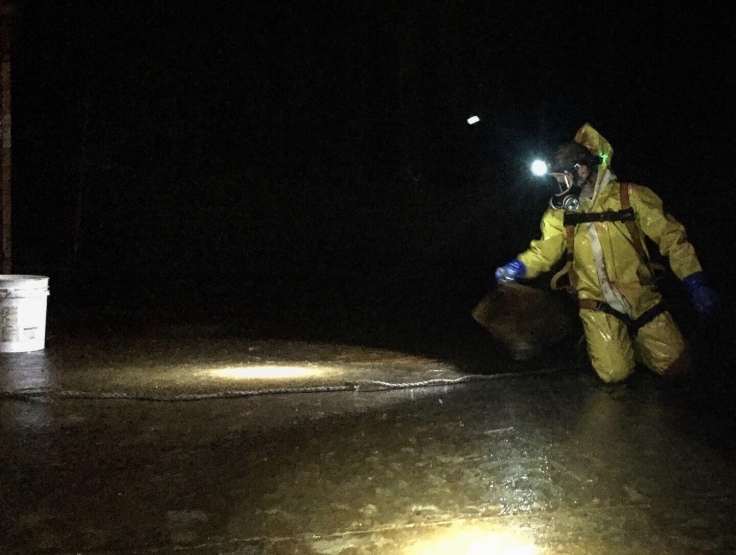
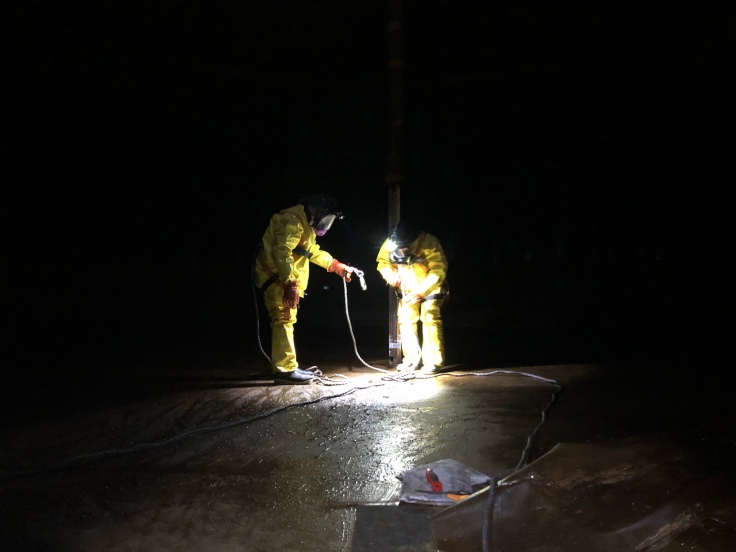 We made good time with this however, and the four of us were ecstatic to finally be done with the messy part, and moving onto the details… requiring respirators but no tyvek as we squeegeed and swept the floor, and removed the dry upper sections of the liner. And finally on our last couple days inside, after forcing outside air through and airing the tank out, we were able to ditch the respirators all together and start growing our beards back. YEEESSSSS.
We made good time with this however, and the four of us were ecstatic to finally be done with the messy part, and moving onto the details… requiring respirators but no tyvek as we squeegeed and swept the floor, and removed the dry upper sections of the liner. And finally on our last couple days inside, after forcing outside air through and airing the tank out, we were able to ditch the respirators all together and start growing our beards back. YEEESSSSS.
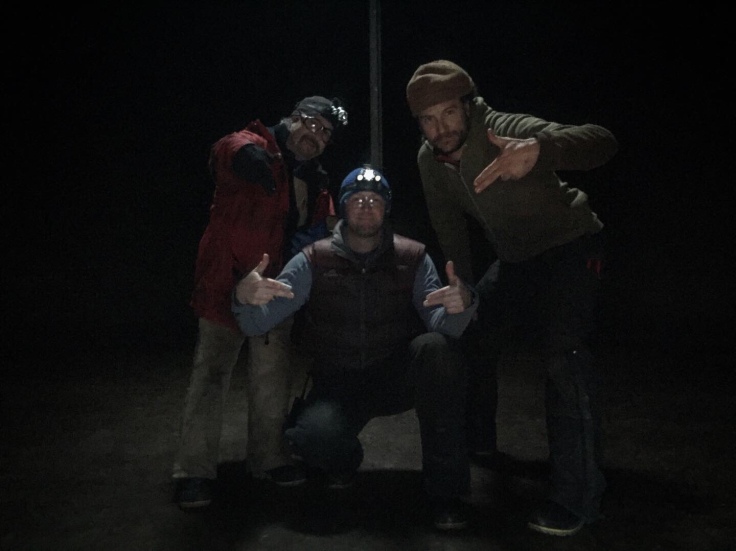
The tank was done. With about a week left, we spent time organizing and tending to other maintenance of valves, filters, hoses, and all other things fuelie… as well as helping out with other departments and doing our “house mouse” duties. A nice wind-down to the project.


We work hard in Antarctica. 6 days a week, 9hr days. And that’s if nothing else pops up. So it’s always nice to relax at the end of the day and on our day off. Palmer is unique in that there is actually a decent amount of recreation that can be done to maintain sanity and health. The “backyard” is open for exploration, obviously with care given to not disturb the local residents (fur seals, leopard seals, penguins, etc). It’s a beautiful rock-strewn area between station and the glacier that covers the majority of the island. Beyond the backyard is the glacier, with it’s carefully flagged area open for exploration. I made a couple trips up and over the glacier, and several little forays into the backyard. Sometimes with Corey or another Station resident, sometimes by myself. It truly is a magical place.

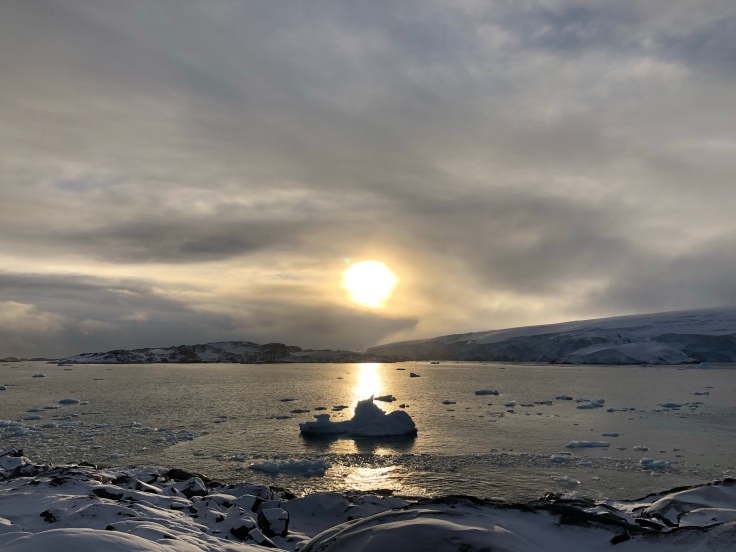

Station life itself is grand. With less than 40 people being in station while we were there, it was great to be able to hang out with everyone… or no one. There is a lounge with a library of movies that is borderline insane. Next door, a little “tavern” if you will, where beverages purchased from the store and be enjoyed over cards, pool, and fresh-popped popcorn. Down closer to the lab building, a sauna and hot tub, perfect for those snowy nights and relaxing after a long workday or hike.



I can’t emphasize how incredible Palmer is enough. Such a drastic change from the Ice I knew before, with a vastly different science program and a sense of community that I’ll always treasure. It was a bittersweet evening moving onto the ship, and back to our “man cans” in the hold. Sweet because the Neumayer Channel would be greeting us the next day and we were heading home accomplished in our project. Bitter because while I can say there’s always a chance I may see McMurdo or even the South Pole again… I doubt the same is true for Palmer.
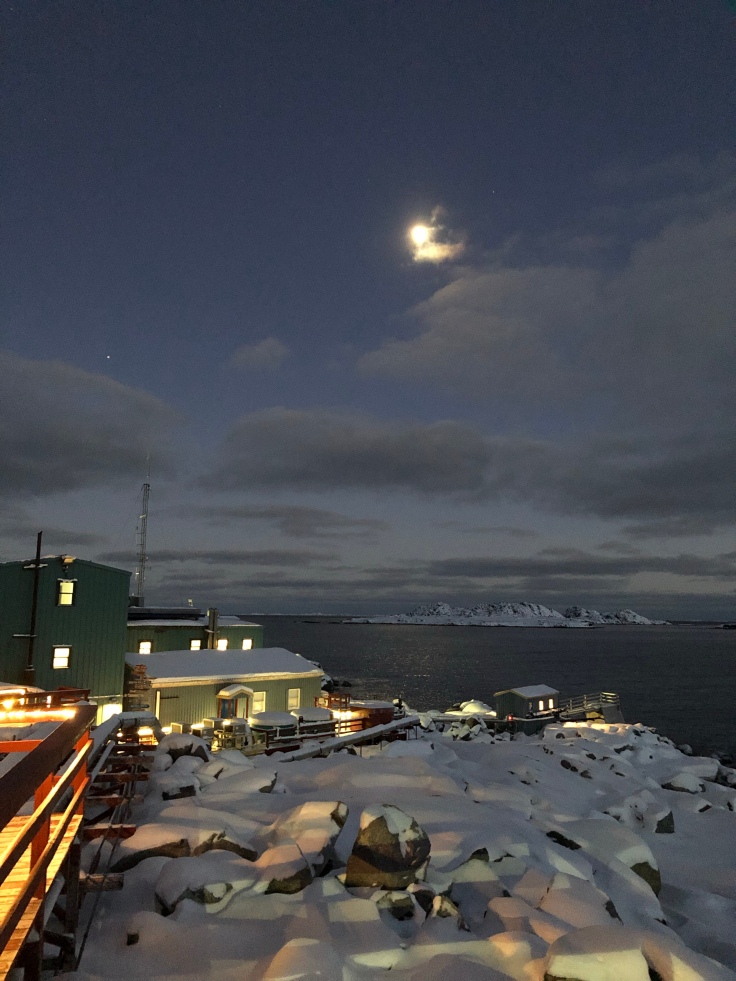

A true “once in a lifetime” experience.




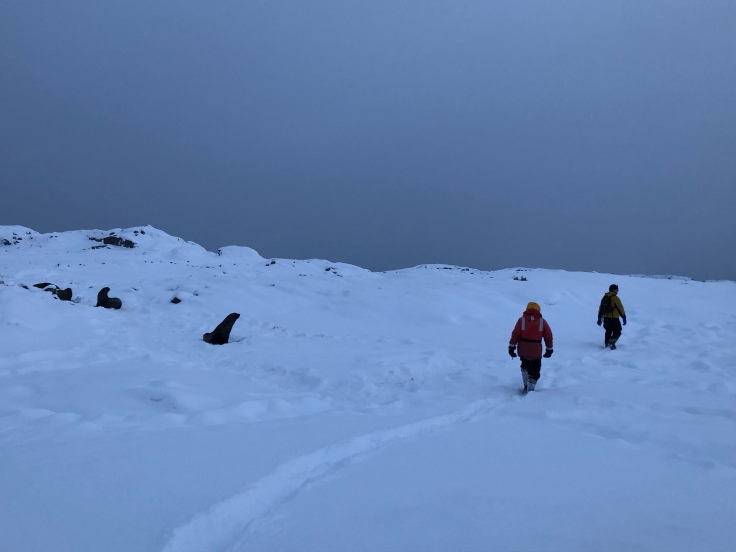




Leave a comment